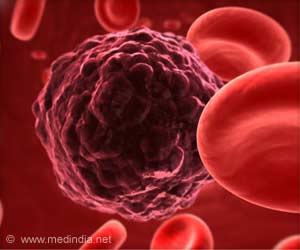Progression of age-related diseases like cancer, diabetes, arteriosclerosis, and NASH can be suppressed by injecting GLS1 inhibitors that remove senescent cells from various tissues and organs.

‘Progression of age-related diseases like cancer, diabetes, arteriosclerosis, and NASH can be suppressed by injecting GLS1 inhibitors that remove senescent cells from various tissues and organs.’
Read More..




The researchers has identified an inhibitor of the glutamate metabolic enzyme GLS1 so that its administration selectively eliminates senescent cells from various organs and tissues in aged mice, and improves age-associated tissue dysfunction and the symptoms of obese diabetes, arteriosclerosis, and NASH (Non-alcoholic steatohepatitis).Read More..
Earlier studies have shown that genetically engineering removal of senescent cells from aged mice can delay the onset of many old age diseases like arteriosclerosis and renal damage thereby extending healthy life expectancy. However, effective drug candidates could not be identified from these studies.
Professor Nakanishi said, "Our results can contribute to the development of new anti-aging therapies that remove senescent cells by targeting these cells' metabolic characteristics.”
In order to search for genes essential for senescent cells' survival, a new method was developed for producing purified senescent cells, which activates the p53 in the cell cycle thereby effectively inducing cellular senescence.
They identified GLS1 gene that is involved in glutamine metabolism is essential for senescent cells' survival and is a potential candidate gene.
Advertisement
The results of this study are interesting and show that as the aging progresses, the motor function declines due to muscle loss, and metabolic disorders due to decrease in adipose tissue size occur.
Advertisement
Currently, GLS1 inhibitors are in clinical trials as effective cancer treatments. Professor Nakanishi said, “We hope that innovative anti-aging therapies and treatments for geriatric diseases will be developed that can remove senescent cells by treatment with GLS1 inhibitors.”
Source-Medindia











